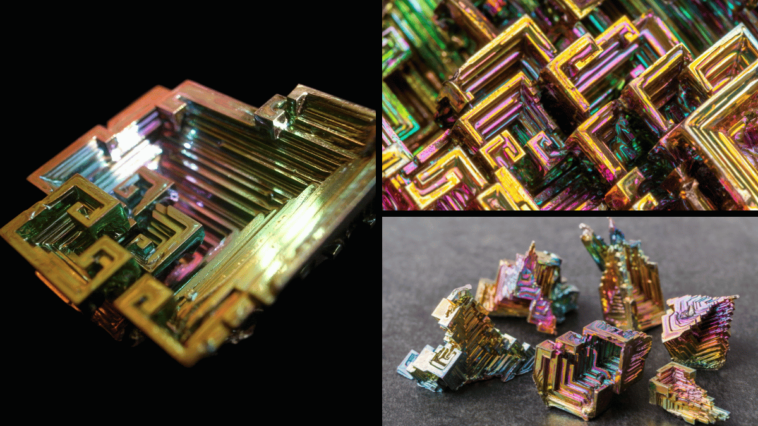Bismuth is a unique and captivating element known for its striking physical properties and colorful, geometric crystal structures. It is a brittle metal with a white, silver-pink hue often exhibiting an iridescent oxide layer that reflects a spectrum of colors from yellow to blue. Bismuth holds the position of the most naturally diamagnetic element and has a very low thermal conductivity.
Chemical and Physical Properties
Bismuth is chemically similar to arsenic and antimony but is less reactive than both. It has a low melting point (271.5 °C or 520.7 °F) for a metal, allowing it to be melted down and cast into shapes easily. This metal is also one of the few substances that expand as it solidifies from its molten state, a property it shares with water.
Formation and Geology
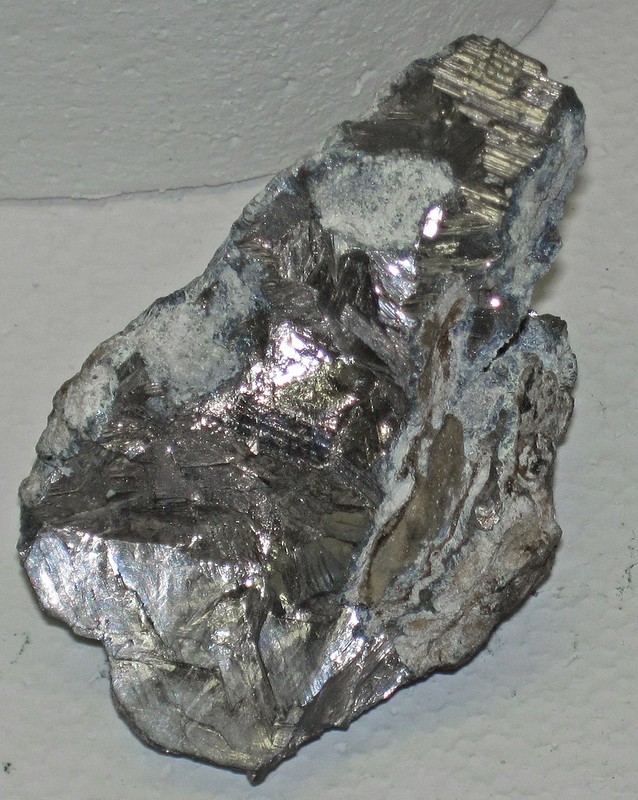
Bismuth is found in the Earth’s crust both in its native (elemental) form and as an impurity in various mineral ores, such as bismuthinite and bismite. It is often associated with other metallic minerals like copper, lead, tin, silver, and cobalt and is often derived as a by-product of refining many of these metals. Native bismuth forms in hydrothermal veins and pegmatites, typically at low temperatures, and is often found with minerals such as quartz and calcite.
Crystal Formation
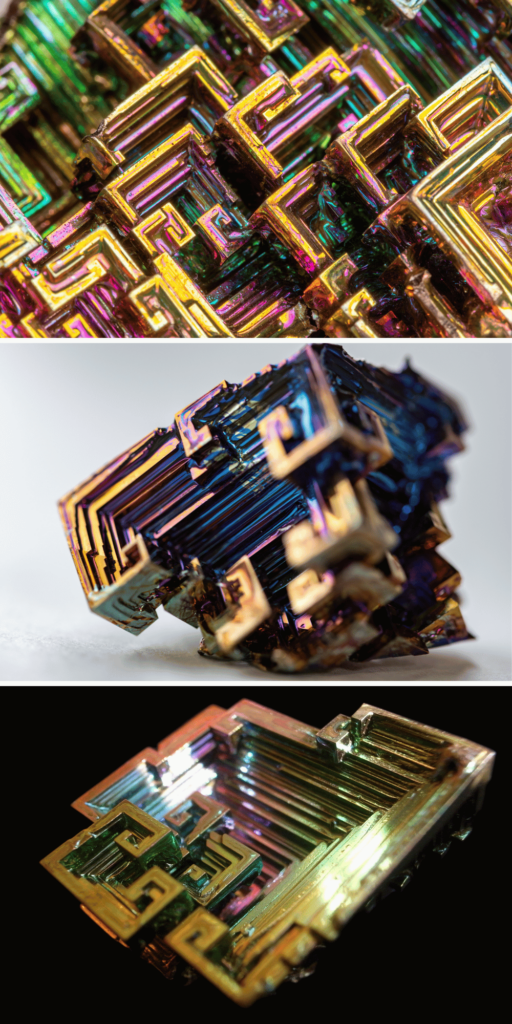
Bismuth crystals are most famously known for their intricate hopper-like structures, which are stair-stepped hollow pyramidal forms. These are created via a laboratory process where bismuth is melted and then allowed to slowly cool. The edges and corners of the crystals grow faster than their faces, leading to the characteristic hollow, geometric shapes.
Physical Characteristics
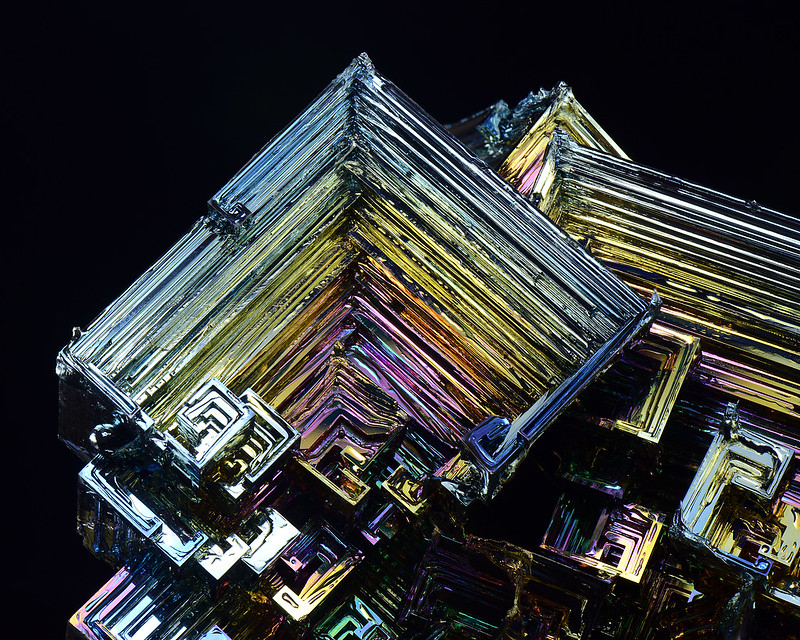
Classification: Native element
Chemical Composition: Bi (pure bismuth)
Color: Silver-white with a pinkish tinge on fresh surfaces; typically oxidizes to exhibit a rainbow of colors due to a thin oxide layer.
Streak: Silver-white
Hardness: 2-2.5 on the Mohs scale
Cleavage: Perfect in one direction
Fracture: Uneven to hackly
Luster: Metallic
Transparency: Opaque
Crystal System: Trigonal (often forms rhombohedral or hopper-shaped crystals when artificially grown)
Applications
Bismuth has a variety of applications:
- Alloys: Due to its low melting point, bismuth is used in various low-melting alloys and solders. It is also a component in fusible alloys, which melt at low temperatures and are used in fire detection systems and emergency sprinkler systems.
- Medicine: Bismuth compounds are used in pharmaceuticals, including bismuth subsalicylate, which is used as an antidiarrheal and to treat helicobacter pylori infections.
- Cosmetics: It provides a pearlescent effect in cosmetics and is used as a non-toxic replacement for lead in some cosmetics and personal care products.
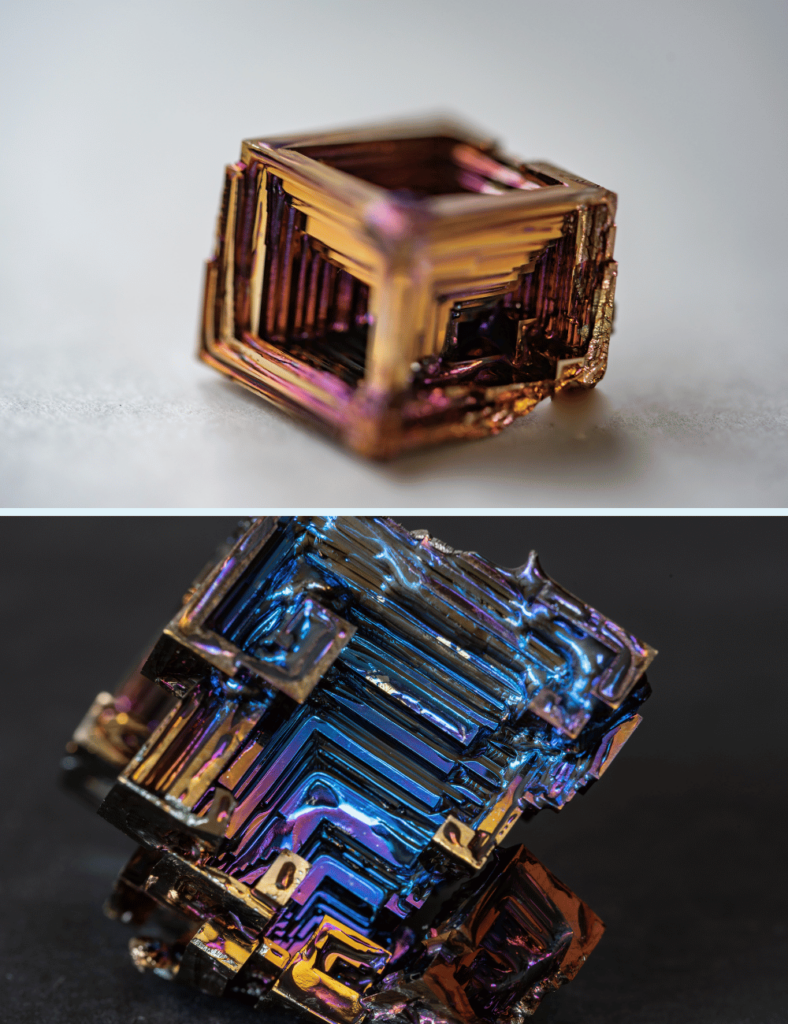
Environmental and Safety Aspects
Bismuth is one of the least toxic heavy metals, making it a safer choice for many applications that previously utilized lead or other more toxic metals. Its stability and non-toxicity have increased its popularity in eco-friendly materials and consumer products.
Bismuth’s unique properties and striking appearance, both as a raw metal and especially in crystalline form, make it highly prized among collectors, artists, and those interested in its practical applications.
- Online rock and mineral club for collectors of all levels!
- Find community with like-minded rock and mineral enthusiasts.
- Monthly Giveaways!
- Free Access to Entire Digital Library of Products (annual memberships)

